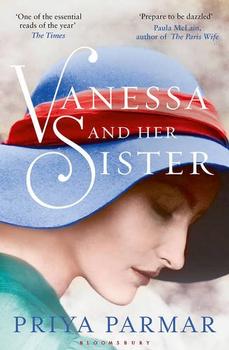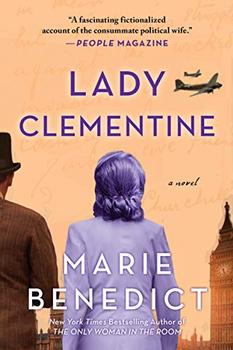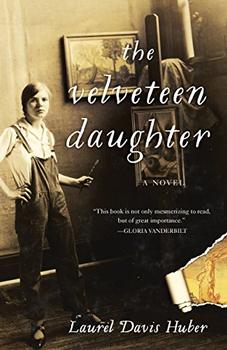Summary | Excerpt | Reading Guide | Reviews | Beyond the book | Read-Alikes | Genres & Themes | Author Bio

Vanessa and Her Sister centers around the relationship of the artist Vanessa Stephen Bell and her sister Virginia Stephen Woolf. Written in the form of a diary, the story encompasses the years 1905 to 1912, during which time, the sisters and their two brothers, Thoby and Adrian, were hosts to weekly gatherings attended by many famous artists, writers, and intellectuals who came to be known as the Bloomsbury Group (see 'Beyond the Book'). The members of this group come vibrantly alive in this novel (Rose N). I was so excited to read this book because I am a long-time devoted reader of all things Virginia Woolf! Priya Parmar gives us the imagined point of view of the non-writer, silent sister, Vanessa, a painter who has always been in the shadow of her famous writer sister, Virginia. Both women were coming into their adulthood, their art, and their marriages, and their close relationship to each other began to change drastically, perhaps driven by the pressures of coping with terrible family tragedies (Judy B).
Think you know Virginia Woolf? Think again!
You will never look at Virginia Woolf the same way again. Though many references are made to her mental illness, the book gives the overwhelming impression that Virginia torments her sister, Vanessa, out of a lifelong, deep-seated and very mean-spirited jealousy, up to and including destroying her marriage. For me this put a severe tarnish on Virginia's halo as a feminist author (Jeanne B). Documents, postcards, and journals weave together a Virginia Woolf who is understandable though not always admirable (Harriette W).
Was she her sister's keeper?
Parmar details the conflicted relationship between the sisters beautifully, and with compassion. The portrait of Vanessa as a sister, wife, mother, and artist painted by the author reveals her love, kindness, patience and determination to succeed, both personally and professionally (Marie D). I especially love the irony that Vanessa is given a voice that soars and sings with humor, insight, and brilliance, qualities traditionally recognized only in her sister Virginia (Judy B). Vanessa was the anchor in the life of her exhausting, often manipulative but gifted sister Virginia. The interesting question becomes: can she chose a life of her own, one with joy and love over her loyalty to her sister? The answer unfolds in a way that rings true to the bonds and strains of sister relationships (Beth M).
You'll find an eye-opening peek at social mores.
Although I was familiar with Virginia Woolf, I wasn't familiar with the Bloomsbury Group and their influence on literature, as well as their modern attitudes on feminism, pacifism and sexuality (Sue J). It is a story of familial love and dependency, insanity, jealousy, sex and marriage in the early 20th century and the evolving social and cultural upheavals of this era (Marie D).
Some found the format challenging, yet it worked well for most.
I thought is was difficult to read. The printed form of the book was very pleasing, but having all the letters and telegraphs back and forth made it a bit confusing at times (Carolyn S). Parmar's decision to write the story of the a tumultuous time in the lives of the Stephen sisters (Vanessa Bell and Virginia Woolf) through diary entries and letters, worked so very well for me (Patty S). I was initially unsure if the format (using diary entries, letters and even telegrams) would be to my liking but it was perfect for this story (Glenn H). The book is beautifully crafted using fictional entries from Vanessa's journal and letters to tell the story - as well as letters and telegrams from other members of the group. This style flowed so smoothly and was so realistic that I looked for footnotes at the end of the book, thinking that Priya Parmar was using the actual correspondence between the sisters (Debra V).
A clever work of historical fiction. What's not to like?
I found myself re-reading sentences and phrases simply to savor the language used or the images created. The story flowed nicely, the language was creative and smart and the characters were memorable (Glenn H). There is, at times, an excess of Victorian drama. However, this only adds to the tone of the story. Parmar is an excellent writer and captures the mood and tone of the era completely (Marjorie H). I highly recommend this book, especially to anyone with an interest in the art and writing scene in Britain in the early 1900s (Susan B). Quirky, clever, heart-rending, original. Priya Parmar has a poetic flair that is highly suited to "channeling" the voices of the Bloomsbury Group. I highly recommend this book even if you don't know these people or think you care about them (Jeanne B).
![]() This review was originally published in The BookBrowse Review in January 2015, and has been updated for the
January 2016 edition.
Click here to go to this issue.
This review was originally published in The BookBrowse Review in January 2015, and has been updated for the
January 2016 edition.
Click here to go to this issue.

If you liked Vanessa and Her Sister, try these:

by Marie Benedict
Published 2020
New from Marie Benedict, the New York Times bestselling author of The Only Woman in the Room! An incredible novel that focuses on one of the people who had the most influence during World War I and World War II: Clementine Churchill.

by Laurel D. Huber
Published 2017
The Velveteen Daughter reveals for the first time the true story of two remarkable women: Margery Williams Bianco, the author of one of the most beloved children's books of all time - The Velveteen Rabbit - and her daughter Pamela, a world-renowned child prodigy artist whose fame at one time greatly eclipses her mother's.
These are not books, lumps of lifeless paper, but minds alive on the shelves
Click Here to find out who said this, as well as discovering other famous literary quotes!
Your guide toexceptional books
BookBrowse seeks out and recommends the best in contemporary fiction and nonfiction—books that not only engage and entertain but also deepen our understanding of ourselves and the world around us.